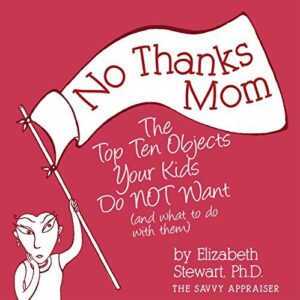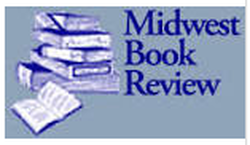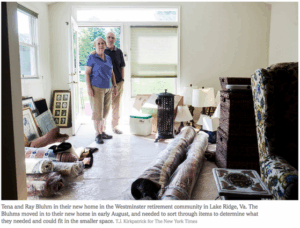 A concise guide for parents of Millennials, No Thanks Mom offers safe advice on what to do with those objects that were lovingly saved, but are not welcomed by the next generation. Learn how to downsize your home without upsizing your children’s home, and without causing strife in your relationships. This is a hot topic that crosses three generations with stories in the New York Times and magazines.
A concise guide for parents of Millennials, No Thanks Mom offers safe advice on what to do with those objects that were lovingly saved, but are not welcomed by the next generation. Learn how to downsize your home without upsizing your children’s home, and without causing strife in your relationships. This is a hot topic that crosses three generations with stories in the New York Times and magazines.
The Baby Boomer generation was promised the American Dream, which for many was manifested in objects. Their children and grandchildren, the Millennials, do not have the same America Dream. They have different values about material objects, and that generally means they don’t want their parents or grandparents’ stuff. A quick glance at the generational charts in the back of this book highlights many of these societal changes that drive these differences.
Prompted by a personal experience of discovering her own treasures in a Goodwill store (see Rebuttal letter below), Dr. Stewart’s fun-to-read guide will have you alternating between laughter and tears as she sets forth plans for what to do with your treasures once your kids have said “No thanks.”
NOTE: If you are the potential recipient of family “stuff,” you might want to open the conversation by gifting this book. Let Mom or Grandma know that they are not alone and you aren’t the only child in the world rejecting family treasures.
Reviews of No Thanks Mom
![]() Certified appraiser Stewart (Collect Value Divest, 2016, etc.) doles out advice for baby boomers whose adult children reject their family heirlooms.
Certified appraiser Stewart (Collect Value Divest, 2016, etc.) doles out advice for baby boomers whose adult children reject their family heirlooms.
Stewart’s slim guide begins with her own story: after her son announced his engagement, she, without asking his opinion, spent more than $2,000 shipping family treasures, such as china and crystal, to him and his future wife. She was ready to send more when they “kindly but firmly” told her to stop. The first chapter then lays out the top 10 items that millennials don’t want, from books to fine porcelain dinnerware. As lifestyles have changed, writes Stewart, so have tastes and object valuations; for example, digital-savvy millennials don’t feel an attachment to old tomes. They also lead mobile lives and don’t care for dark, heavy antique furniture. So what’s a boomer to do with all this rejected stuff? Chapter 2 lays out a “Five Piles Theory” of organizing and downsizing, beginning with what can be sold. If one is planning to donate items, Chapter 3 advises readers not to second-guess that decision. At times, this unblinking guide leaves the impression that the younger generation is erasing its heritage; in one sad anecdote, for instance, a 26-year-old seems more interested in dressing up for Star Trek conventions than inheriting and appreciating her great-grandmother’s steamer trunk. However, although Stewart acknowledges that there are exceptions, she still offers sweeping generalizations about millennials and other generations; many readers from Generation X, for instance, will be surprised to find out that they supposedly have “hired-out” housekeeping. The author’s voice is friendly but without sentimentality—she calls family photos “paper ephemera,” for example, and she sometimes scolds readers: “You have to face facts! Your grown children value a mobile lifestyle, uncluttered comfort, and the aesthetics of prevailing technology.” It’s a quick, easy read, though, which is brimming with color photographs of smiling people and lovely objects, such as antique dolls. It also contains some sound advice; for example, Stewart points out that local theater costume shops may want donated linens.
A wake-up call that may inspire retirees to spend their kids’ inheritances.
 Synopsis: A concise guide for parents of millennials, “No Thanks Mom: The Top Ten Objects Your Kids Do Not Want (and what to do with them)” by Elizabeth Steward offers sage advice on what to do with those objects ‘saved’ but not welcomed by the next generation.
Synopsis: A concise guide for parents of millennials, “No Thanks Mom: The Top Ten Objects Your Kids Do Not Want (and what to do with them)” by Elizabeth Steward offers sage advice on what to do with those objects ‘saved’ but not welcomed by the next generation.
Collections and treasured objects do not always span the generation gap, sustaining both high market value and the taste and style of the 21st century. Learn to downsize what formerly was valued without upsizing your kid’s home. Of special note is an invaluable chapter, The Top Ten Objects Kids Do Not Want that discusses the current taste for once treasured objects such as formal dinner china.
Often a flashpoint between parents and heirs, objects are a reflection of lives and homes. Tales of ‘stuff’ not “in style” include market remedies for antiques, fine art, and collectibles: how and where to sell, what to donate, what to save, and what not to bequest to heirs.
Offered by an appraiser with three decades of experience, a collector of collector’s stories, the guide sets forth roadmaps and plans for what to do with objects once your kids have said “No Thanks.” Topics include The Five Piles Theory of Downsizing, and Rules and Habits for Creative Divesting.
Critique: Exceptionally informative, well written, and thoroughly ‘reader friendly’ in organization and presentation, “No Thanks Mom: The Top Ten Objects Your Kids Do Not Want (and what to do with them)” is a unique and unreservedly recommended instructional guide for both community and academic library Parenting instructional reference collections. It should be noted for personal reading lists that “No Thanks Mom” is also available in a digital book format (Kindle, $4.99).
Recent article in The New York Times about the subject of No Thanks Mom.

